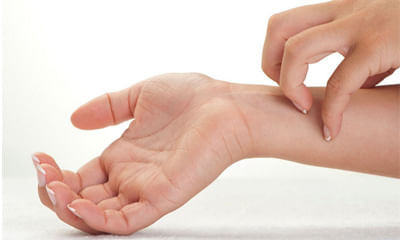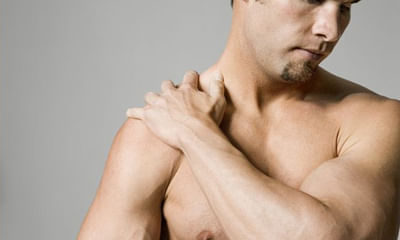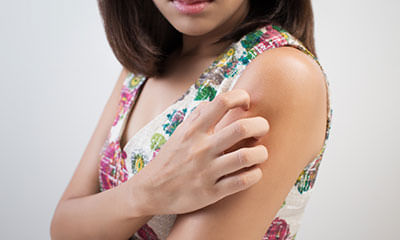Irritation At Vaginal Opening
The area around my urethral opening is swollen from last 4 days no song of infection what should I do? ...
Ask Free Question
Ensure good hygiene practices in the area. Gently clean the area with warm water, avoid using harsh chemicals or perfumed products that may irritate the skin further. If the swelling does not improve or if you experience any other concerning symptoms such as pain, fever, or unusual discharge, it is crucial to consult gynecologist for a proper evaluation and diagnosis.
I was having yeast infection but was asymptomatic with slight itching first I thought it's uti as I am suffering since o ...
Ask Free Question
Hi, Lybrate user, bacterial vagoasis cause burning, irritation and itching with foul discharge causing recurrence of infection. •wear ,loose under garments to allow fresh air to pass through, nourishing your pelvic, groin and vaginal muscles to check infection.•clean external and internal genital area with underlying homoeopathic medicine. @ echinecea q -20 drops with 1/2 cup of water, apply ,thrice, daily, deep into vagina and vulva, gently. •@take, 10 drops of echineceaq -mixed with 2tsfl of water, thrice, orally. •consult ,privetly for a better and faster recovery, please. •avoid, junk food, alcohol and nicotine. •report after a wk, privetly, please. Tk, care.
I am 45 years old height 5'8" weight about 81 kg. Am having frozen shoulder in right shoulder. Can anti inflammatory inj ...
Ask Free Question
Do’s and don’ts for shoulder pain do’s do the prescribed exercise regularly to maintain strength, flexibility and range of motion. Do keep the affected arm supported. Use an ice pack for pain relief. Apply the ice pack 3-4 times a day for 10 minutes. Don’ts don't sleep on the affected side. Don't lift heavyweight with the affected arm. Don't jerk your shoulder to avoid stress. Don't use the arm to push yourself up in bed or from a chair. Don't participate in contact sports or do any repetitive heavy lifting. We suggest you to wear shoulder support brace which is available in two different sizes which makes the patient to feel comfortable as it maintains the shoulder in anatomical position and the short lever is maintained. The reason to maintain the short lever in the shoulder joint is it helps the shoulder to prevent the movements which itself is the key to have better progression of healing in the shoulder region. This is suggested for the following conditions. This shoulder support brace what we are suggesting for you is available at our clinic. If you want you can buy from us, if you are far away from chennai we can send you by courier. The reason why we are conveying you to buy from us is we can demonstrate over the videocall (using whatsapp) and also we can monitor you throughout when to wear it and how long to wear it. And also if you find any difficulty wearing the brace you can also revert back to us for few more suggestions and we can propose you good solution how to go about it. Strenghtening exercises 1.pendulum stretch do this exercise first. Relax your shoulders. Stand and lean over slightly, allowing the affected arm to hang down. Swing the arm in a small circle — about a foot in diameter. Perform 10 revolutions in each direction, once a day. As your symptoms improve, increase the diameter of your swing, but never force it. When you're ready for more, increase the stretch by holding a light weight (three to five pounds) in the swinging arm. 2. Towel stretch hold one end of a three-foot-long towel behind your back and grab the opposite end with your other hand. Hold the towel in a horizontal position. Use your good arm to pull the affected arm upward to stretch it. You can also do an advanced version of this exercise with the towel draped over your good shoulder. Hold the bottom of the towel with the affected arm and pull it toward the lower back with the unaffected arm. Do this 10 to 20 times a day. 3. Finger walk face a wall three-quarters of an arm's length away. Reach out and touch the wall at waist level with the fingertips of the affected arm. With your elbow slightly bent, slowly walk your fingers up the wall, spider-like, until you've raised your arm as far as you comfortably can. Your fingers should be doing the work, not your shoulder muscles. Slowly lower the arm (with the help of the good arm, if necessary) and repeat. Perform this exercise 10 to 20 times a day. 4. Cross-body reachsit or stand. Use your good arm to lift your affected arm at the elbow, and bring it up and across your body, exerting gentle pressure to stretch the shoulder. Hold the stretch for 15 to 20 seconds. Do this 10 to 20 times per day. 5. Armpit stretch using your good arm, lift the affected arm onto a shelf about breast-high. Gently bend your knees, opening up the armpit. Deepen your knee bend slightly, gently stretching the armpit, and then straighten. With each knee bend, stretch a little further, but don't force it. Do this 10 to 20 times each day. Starting to strengthen as your range of motion improves, add rotator cuff–strengthening exercises. Be sure to warm up your shoulder and do your stretching exercises before you perform strengthening exercises. 6. Outward rotationhold a rubber exercise band between your hands with your elbows at a 90-degree angle close to your sides. Rotate the lower part of the affected arm outward two or three inches and hold for five seconds. Repeat 10 to 15 times, once a day. 7. Inward rotation stand next to a closed door, and hook one end of a rubber exercise band around the doorknob. Hold the other end with the hand of the affected arm, holding your elbow at a 90-degree angle. Pull the band toward your body two or three inches and hold for five seconds. Repeat 10 to 15 times, once a day. Shoulder exercises and stretches regular exercises and stretches can keep your shoulder strong and flexible. A few things to remember before swinging in to exercises: •stop any exercise if you have more shoulder pain. It may be too soon for you to try. •watch your form. Exercising incorrectly can also cause or worsen shoulder problems. •warm up, even before deep stretching. Light shoulder rolls, gentle movements, or even a warm shower are all ways to warm up your muscles before exercise and stretching. Pendulum stretch for range of motion•stand and bend at the waist. •let your arm on the injured side hang straight down. •keep your neck relaxed. •move your arm in a circle up to 20 times. •do once or more times in a day. Overhead shoulder stretch•sit or stand to do this shoulder stretch. •intertwine your fingers in front of you. •bend your elbows and raise your arms above your head. You can also place your hands on your head or behind it. •gently squeeze your shoulder blades together to move your elbows back. •continue for up to 20 repetitions. Repeat 5 to 10 times a day.Pa shoulder: do’s: •exercise regularly and immediately follow a physical therapy program. •use an ice pack for pain relief. Apply the ice pack 3-4 times a day for 10 minutes. •take pain relievers as directed by your shoulder doctor. Don’ts: •don’t stop moving your shoulders entirely because of the pain. •do not do activities that involve sudden movements, such as heavy lifting on the affected side. As your body recovers, continue to make gentle movements, but avoid irritating and moving your shoulders. •doesn’t sleep on a sore shoulder •don’t miss your workout routine and physical therapy. •don’t neglect your diet. Frozen shoulder is associated with general health. Frozen shoulder is strongly associated with many low-grade systemic inflammatory conditions. Your body needs healthy, anti-inflammatory food to recover. •stop smoking and drinking alcohol. No it will definitely help you to come out of pain. You can consume preferably one tablet per day and not more than that. Drink lot of hot water during your cycle time as there might be gastric trouble during menstrual cycle. We cannot give suggestions about homeopathy medicine as we are physiotherapists. I have given the following suggestions and protocols for your other pain in the back, heel and shoulder.
I have a bump near my bartholin gland on the right side outside my vaginal opening. It is irritating, itchy, slightly pa ...
Ask Free Question
Hi, lybrate user, •Its brotheline's cyst you are suffering from ,goes blocked to secrete fluid, lubricating your vagina , it converts into cyst ,abscess,owing to personal hygiene, needs interrogation, locally. •Wear, loose panties to allow fresh air to pass through inorder to nourish your pelvic and vaginal muscles to ease your problem. •Tk, plenty of water to hydrate your body inorder to moisten your vulva. •Consult, privetly for a faster recovery, till then take, homoeopathic medicine, underlying : @ Thuja occ 30ch -5 drops, thrice. •Avoid, junk food, alcohol and nicotine. Tk care.
I am 24 years old .when I try to urine by opening foreskin of penis then I feel some pain in penis. Also I have when I a ...
Ask Free Question
Here are a few potential causes for the symptoms you described: balanitis: balanitis is inflammation of the glans (head) of the penis, often caused by poor hygiene, an infection, or an allergic reaction. It can result in pain, redness, and discomfort. Urinary tract infection (uti): utis can cause pain or a burning sensation during urination. It's possible that the retraction of the foreskin is irritating the urethra and exacerbating the discomfort. Excessive precum production: excessive precum production is a natural variation, but if it is causing persistent irritation or discomfort, it's best to consult a healthcare professional for further evaluation. To address your concerns and find the appropriate treatment, it is important to schedule an appointment with a healthcare professional. They can perform a physical examination, review your medical history, and order any necessary tests to determine the underlying cause of your symptoms. In the meantime, you can practice good hygiene by gently cleaning the penis with warm water and mild soap, avoiding harsh chemicals or irritants. It is generally advisable to avoid manipulating or forcefully retracting the foreskin until you receive medical advice.
My penis top skin has cuts. When I try to elaborate the top it pains. The skin is tight. Thought it gets opened. But I a ...
Ask Free Question
The symptoms you described, including cuts on the top of your penis, pain when stretching the skin, tightness, and the presence of a cream-colored fluid called smegma, can be indicative of various conditions. One possibility is balanitis, which is inflammation of the foreskin and head of the penis. Balanitis can be caused by poor hygiene, infections, irritation, or certain medical conditions. While prediabetes itself may not directly cause the symptoms you mentioned, it's important to manage your blood sugar levels and overall health. High blood sugar levels can affect the body's ability to heal and fight infections, so it's possible that it may contribute to the development or persistence of certain conditions. To address your concerns, I recommend you follow these steps: maintain good hygiene: clean the area gently with warm water and mild soap, ensuring you rinse thoroughly and pat the area dry. Avoid using harsh soaps or excessive force when cleaning. Avoid irritants: refrain from using any harsh chemicals or irritants in the genital area, such as scented soaps, lotions, or tight-fitting clothing. Consult a healthcare professional: make an appointment with a doctor, preferably a urologist or a dermatologist, who can examine your symptoms in person, provide a proper diagnosis, and recommend appropriate treatment options. They will be able to determine if your symptoms are related to balanitis or another underlying condition and advise you accordingly.
Hi doctor I am 24 years old it's my first tym that I am experiencing this during sex inner lips of my vagina is burning ...
Ask Free Question
Vaginal itching and irritation is common. It usually isn’t cause for concern. However, persistent itching, burning, and irritation may be a sign of infection or another underlying condition. This includes discomfort anywhere in the vaginal area, such as your: labia clitoris vaginal opening these symptoms may begin suddenly or grow in intensity over time. The burning and irritation may be constant, or it may worsen during an activity like urination or sexual intercourse.
Hello, I had sexual intercourse for the first time, but I didn't broke my virginity as at time of sexual intercourse the ...
Ask Free Question
Dear lybrate-user, burning sensation in the vagina and blood in the urine can be symptoms of a urinary tract infection (uti), which is a common condition that can be caused by bacteria entering the urethra during sexual intercourse. It's possible that the burning sensation and uti are unrelated to your first sexual experience. However, it's also possible that you may have experienced some tearing or trauma during intercourse, which can cause discomfort and bleeding. In the meantime, you can try to relieve the burning sensation by drinking plenty of water, avoiding irritants like douches or scented products, and taking over-the-counter pain relievers. It's important to avoid sexual activity to prevent further irritation or infection.
Hi doctor, undergone c section 1 month ago. While I undressed incision a small opening is there doctor said to keep it d ...
Ask Free Question
It needs examination by seeing any ethylon stitch which is put inside is come out which irritates the wound.
I am having sever pain in upper limbs below my shoulders as a result of which I am unable to move, use hands in a limite ...
Ask Free Question
It is called as periarthritis shoulder and for that you can do hotwater fermentation and ice therapy at home. You shall also take physiotherapy treatment called shortwave diathermy which would help you to get relieved with pain. After sleep getting up in the morning will be painful if you work in the computers for long which will definitely affect the neck and shoulder as the constant posture makes the joint to become stiffened. That's why you get usually pain in shoulder joints & in the back. •mobility exercises rest. Avoid doing things that require you to bend at the hip or put a lot of pressure on the hip. Avoid sleeping on the side of your hip that is painful and sitting for long periods of time •cold and heat. Treating pain with heat and cold may help. Wrap an ice pack or a bag of frozen vegetables in a towel to ice your hip. A warm bath or shower may also help reduce your pain and prepare your muscles for stretching. •stretch. Gently stretching your body may reduce hip pain, especially if the cause is a strain or pinched nerve. Posture when standing: make sure you have a neutral pelvic position. Stand upright, head facing forward, back straight, and balance your weight evenly on both feet. Keep your legs straight and your head in line with your spine. Posture when sitting: a good seat for working should have good back support, arm rests and a swivel base. When sitting, try to keep your knees and hips level and keep your feet flat on the floor, or use a footstool. You should ideally be able to sit upright with support in the small of your back. If you are using a keyboard, make sure your elbows are at right-angles and that your forearms are horizontal. Shoes: flat shoes place less of a strain on the back. Driving: it is important to have proper support for your back. Make sure the wing mirrors are properly positioned so you do not need to twist. The pedals should be squarely in front of your feet. If you are on a long journey, have plenty of breaks. Get angle. Out of the car and walk around. Bed: you should have a mattress that keeps your spine straight, while at the same time supporting the weight of your shoulders and buttocks. Use a pillow, but not one that forces your neck into a steep. Standing arm swings to do this exercise: 1.Stand tall with your arms by your sides. 2.Engage your core and swing your arms forward until they’re as high as you can go. Make sure you don’t raise your shoulders. 3.Return your arms to the starting position and repeat. 4.Do this movement for 30 to 60 seconds. Shoulder pass-through to do this exercise: 1.Stand with your feet shoulder-width apart and your arms in front of your body. 2.Hold a stick, like a broomstick or pvc pipe, with an overhand grip. Your arms will be wider than shoulder-width. Make sure the stick or pipe is parallel to the floor. 3.Engage your core and slowly raise the broomstick or pipe above your head, keeping your arms straight. Only go as far as comfortable. 4.Hold the pose for a few seconds. 5.Return to the starting position. 6.Repeat 5 times. High-to-low rows to do this exercise: 1.Secure a resistance band to a sturdy object above shoulder height. 2.Kneel down on one knee and grab the band with the opposite hand. The other hand can rest at your side. 3.Pull the band toward your body while keeping your torso and arm straight. Focus on squeezing the shoulder blades together. 4.Return to the starting position and repeat. 5.Do 2–3 sets of 10 repetitions on each side. Reverse fly to do this exercise: 1.Hold a dumbbell in each hand. 2.Stand with your feet shoulder-width apart, knees slightly bent. 3.Engage your core and bend forward at the waist. Keep your back straight. Your arms will be extended. 4.Raise your arms away from your body. Focus on squeezing your shoulder blades together. Stop when you get to shoulder height. 5.Slowly return to the starting position and repeat. 6.Do 3 sets of 10 repetitions. Rotation with dumbbell o do this exercise: 1.Stand with your feet shoulder-width apart while holding a light dumbbell in your right hand. 2.Raise your arm so your elbow is at shoulder height. The front of your hand will be facing the ground. 3.Rotate your shoulder to bring your arm and weight up so your hand is raised toward the ceiling. 4.Slowly return to the starting position and repeat before changing sides. 5.Do 2–3 sets of 12 repetitions on each arm. Mobility stretches cross-arm stretch to do this stretch: 1.Stand with your feet slightly less than shoulder-width apart and bring your right arm up to a little less than shoulder height. 2.Place your left hand on your right elbow and gently pull your right arm across your body using the left hand to support your arm. 3.Hold this position for up to 30 seconds. 4.Repeat on the opposite side. 5.Do each side 3–5 times. Sleeper stretch to do this stretch: 1.Lie on the affected side. If you have no injury or pain, choose a side to start with. Your shoulder should be stacked underneath you. 2.Bring your elbow straight out from your shoulder and bend this arm, so your fingers are pointing toward the ceiling. This is the starting position. 3.Gently guide this arm toward the floor using the unaffected arm. Stop when you feel a stretch in the back of your affected shoulder. 4.Hold this position for up to 30 seconds. 5.Do 3 repetitions before changing sides. Doorway stretch to do this stretch: 1.Stand in a doorway with elbows and arms forming a 90-degree angle. Your feet should be in a split stance. 2.Bring your right arm up to shoulder height and place your palm and forearm on the doorway. 3.Gently lean into the stretch, only going as far as comfortable. 4.Hold the stretch for up to 30 seconds. 5.Change sides and repeat. Perform on each side 2–3 times. Chest expansion to do this stretch: 1.Stand tall with your feet together. 2.Hold the end of a towel or exercise band in each hand, with your arms behind your body. 3.Use the towel or band to help move your shoulder blades together and open your chest. This will cause you to look toward the ceiling. 4.Hold this pose for up to 30 seconds. 5.Repeat 3–5 times. Strenghtening exercises 1.pendulum stretch do this exercise first. Relax your shoulders. Stand and lean over slightly, allowing the affected arm to hang down. Swing the arm in a small circle — about a foot in diameter. Perform 10 revolutions in each direction, once a day. As your symptoms improve, increase the diameter of your swing, but never force it. When you're ready for more, increase the stretch by holding a light weight (three to five pounds) in the swinging arm. 2. Towel stretch hold one end of a three-foot-long towel behind your back and grab the opposite end with your other hand. Hold the towel in a horizontal position. Use your good arm to pull the affected arm upward to stretch it. You can also do an advanced version of this exercise with the towel draped over your good shoulder. Hold the bottom of the towel with the affected arm and pull it toward the lower back with the unaffected arm. Do this 10 to 20 times a day. 3. Finger walk face a wall three-quarters of an arm's length away. Reach out and touch the wall at waist level with the fingertips of the affected arm. With your elbow slightly bent, slowly walk your fingers up the wall, spider-like, until you've raised your arm as far as you comfortably can. Your fingers should be doing the work, not your shoulder muscles. Slowly lower the arm (with the help of the good arm, if necessary) and repeat. Perform this exercise 10 to 20 times a day. 4. Cross-body reachsit or stand. Use your good arm to lift your affected arm at the elbow, and bring it up and across your body, exerting gentle pressure to stretch the shoulder. Hold the stretch for 15 to 20 seconds. Do this 10 to 20 times per day. 5. Armpit stretch using your good arm, lift the affected arm onto a shelf about breast-high. Gently bend your knees, opening up the armpit. Deepen your knee bend slightly, gently stretching the armpit, and then straighten. With each knee bend, stretch a little further, but don't force it. Do this 10 to 20 times each day. Starting to strengthen as your range of motion improves, add rotator cuff–strengthening exercises. Be sure to warm up your shoulder and do your stretching exercises before you perform strengthening exercises. 6. Outward rotationhold a rubber exercise band between your hands with your elbows at a 90-degree angle close to your sides. Rotate the lower part of the affected arm outward two or three inches and hold for five seconds. Repeat 10 to 15 times, once a day. 7. Inward rotation stand next to a closed door, and hook one end of a rubber exercise band around the doorknob. Hold the other end with the hand of the affected arm, holding your elbow at a 90-degree angle. Pull the band toward your body two or three inches and hold for five seconds. Repeat 10 to 15 times, once a day. Shoulder exercises and stretches regular exercises and stretches can keep your shoulder strong and flexible. A few things to remember before swinging in to exercises: •stop any exercise if you have more shoulder pain. It may be too soon for you to try. •watch your form. Exercising incorrectly can also cause or worsen shoulder problems. •warm up, even before deep stretching. Light shoulder rolls, gentle movements, or even a warm shower are all ways to warm up your muscles before exercise and stretching. Pendulum stretch for range of motion•stand and bend at the waist. •let your arm on the injured side hang straight down. •keep your neck relaxed. •move your arm in a circle up to 20 times. •do once or more times in a day. Overhead shoulder stretch•sit or stand to do this shoulder stretch. •intertwine your fingers in front of you. •bend your elbows and raise your arms above your head. You can also place your hands on your head or behind it. •gently squeeze your shoulder blades together to move your elbows back. •continue for up to 20 repetitions. Repeat 5 to 10 times a day.Do’s and don’ts for shoulder pain do’s do the prescribed exercise regularly to maintain strength, flexibility and range of motion. Do keep the affected arm supported. Use an ice pack for pain relief. Apply the ice pack 3-4 times a day for 10 minutes. Don’ts don't sleep on the affected side. Don't lift heavyweight with the affected arm. Don't jerk your shoulder to avoid stress. Don't use the arm to push yourself up in bed or from a chair. Don't participate in contact sports or do any repetitive heavy lifting. We suggest you to wear shoulder support brace which is available in two different sizes which makes the patient to feel comfortable as it maintains the shoulder in anatomical position and the short lever is maintained. The reason to maintain the short lever in the shoulder joint is it helps the shoulder to prevent the movements which itself is the key to have better progression of healing in the shoulder region. This is suggested for the following conditions. This shoulder support brace what we are suggesting for you is available at our clinic. If you want you can buy from us, if you are far away from chennai we can send you by courier. The reason why we are conveying you to buy from us is we can demonstrate over the videocall (using whatsapp) and also we can monitor you throughout when to wear it and how long to wear it. And also if you find any difficulty wearing the brace you can also revert back to us for few more suggestions and we can propose you good solution how to go about it. Pa shoulder: do’s: •exercise regularly and immediately follow a physical therapy program. •use an ice pack for pain relief. Apply the ice pack 3-4 times a day for 10 minutes. •take pain relievers as directed by your shoulder doctor. Don’ts: •don’t stop moving your shoulders entirely because of the pain. •do not do activities that involve sudden movements, such as heavy lifting on the affected side. As your body recovers, continue to make gentle movements, but avoid irritating and moving your shoulders. •doesn’t sleep on a sore shoulder •don’t miss your workout routine and physical therapy. •don’t neglect your diet. Frozen shoulder is associated with general health. Frozen shoulder is strongly associated with many low-grade systemic inflammatory conditions. Your body needs healthy, anti-inflammatory food to recover. •stop smoking and drinking alcohol. No it will definitely help you to come out of pain. You can consume preferably one tablet per day and not more than that. Drink lot of hot water during your cycle time as there might be gastric trouble during menstrual cycle. We cannot give suggestions about homeopathy medicine as we are physiotherapists. I have given the following suggestions and protocols for your other pain in the back, heel and shoulder.








